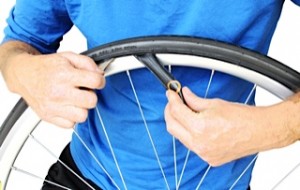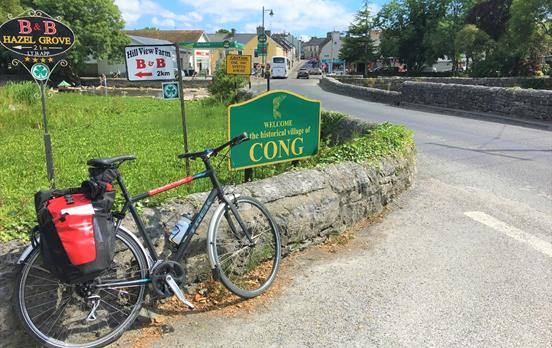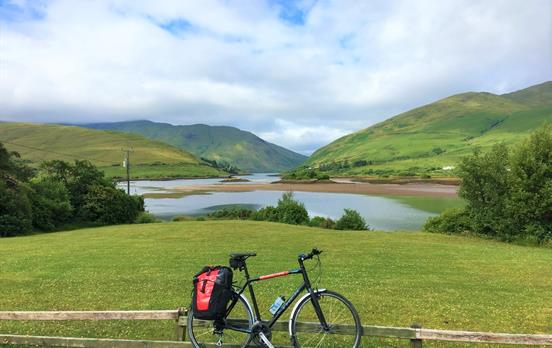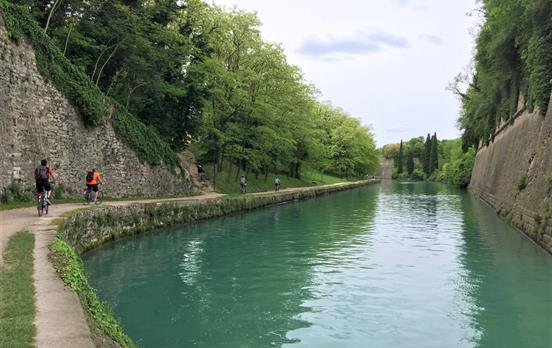In your dream, a cycling holiday is filled with only sunny days and miles of easy going cycling (even the hills are easy). But then this idyllic picture is suddenly punctured (literally!) by a flat tyre. Luckily the supplied hire bike with Macs Adventure cycling holidays comes with a handy puncture repair kit and pump, which puts your dream back on course, but only if you actually know how to fix the puncture. So that your dream cycling holiday remains in focus, it’s a good idea, before you go, to learn the exact steps to repairing a punctured tyre. It’s not difficult and with a little practice you’ll have the confidence to know that a flat tyre won’t ruin your ideas of the best cycling holiday ever.
How to fix a punctured tyre
Before you start, it’s worth understanding how a wheel and tyre is structured. The wheel is the metal part, including rim, spokes and hub. The rubber outer tyre is the part that has contact with the road and then there is an inner tube, which you can’t see. The inner tube has a valve that allows it to be inflated with air using a pump. When a tyre punctures, it is normally because a foreign object has pierced the outer rubber part and penetrates the inner tube, causing a hole. The air escapes from the inner tube at various rates. Sometimes it will be a slow puncture, when the air escapes slowly and the tyre gradually deflates, or a sudden puncture, when the inner tube quickly deflates.
The basic kit for repairing a punctured tyre includes tyre levers, a repair patch or spare inner tube and a pump. It could be a good idea to take a pack of emergency quick fix puncture repair patches with you. Look for these on-line.
9 steps to repairing a bike tyre puncture
Bike wheel skewers with quick release.
1. Remove the wheel from the bike. Most bikes have quick release skewers so you simply release this and remove the wheel. The front wheel will be easier than the back wheel but with practise neither are challenging. Many bikes require you to open up the brake levers to make the removal of the wheel easier.
2. You will need two (or three) tyre levers to remove the rubber outer tyre. Push the levers up under the edge of one side of the tyre at the rim of the wheel. You should be able to create a gap between the levers and then pull the levers around the circumference of the tyre to release it from the wheel all the way round.
3. With one side of the tyre released from the rim you can have access to the inner tube. Loosen and remove the nut that keeps the valve in place on the wheel. Now remove the inner tube.
4. If you can see where the air is escaping you can repair the hole with a patch. It is easier to locate the hole if you can pump up the inner tube while holding it under water. A nearby river is useful or ask a shop or cafe for a bowl of water. Most repair kits include sticky emergency patches that should be enough to repair the tyre if the hole is not too large. I have suggested packing your own emergency repair patches just in case. If you can’t see the hole, or you don't have a patch, replace with a new inner tube and then repair the damaged one back at base or when you get home.
5. Make sure you also check the tyre inside and out (run you fingers over both sides) to ensure that whatever penetrated the tyre is no longer there. If you forget to do this you could find that the new inner tube punctures again when you blow it up and start cycling.
6. Now reverse your repair actions. Place the deflated inner tube (new or repaired) on the inside rim of the wheel and underneath the tyre. Locate the valve and screw the nut back on. Now pull and roll the tyre back inside the wheel rim. Be careful not to pinch the inner tube while doing this. You may need to use your tyre levers to reposition the final part of the tyre.
7. Now check all the way round the tyre to make sure that the inner tube is not trapped at the edge. If it is, and you proceed to pump it up, it will puncture again under pressure.
8. Pump up the inner tube until you have the required pressure.
9. Replace the wheel on the bike, do up the self-adjusting skewers and cycle on into your dream cycling holiday.

























































 Australia
Australia New Zealand
New Zealand South Africa
South Africa European Union
European Union